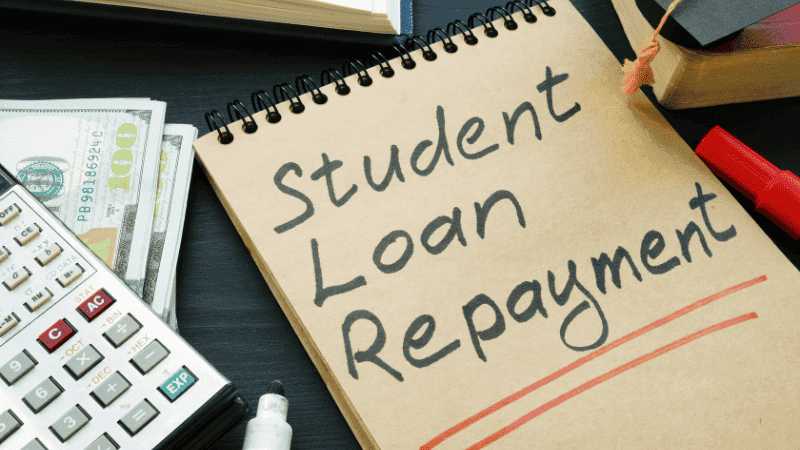The current administration’s proposal to grant up to $20,000 in student loan forgiveness faced a setback when the Supreme Court rejected it in late June 2023.
The administration remains committed to providing debt relief, however. Their recent initiative aims to alleviate $39 billion in student loan debt, but that only applies to a fraction of borrowers.
Learn more about when the student loan pause ends, how to prepare for payments to resume, and what student loan changes you should know.
You can also contact a college planning specialist if you need help understanding how these new updates will affect you and what you can do about it.
When does the student loan pause end?
The forbearance period suspended interest-free payments and was initially implemented as an emergency measure during the pandemic in March 2020.
After three years and nine extensions, the interest-free federal payment suspension will end as Congress mandates the resumption of student loan payments.
Additionally, individuals who completed their education in 2020 or later will need to prepare for their first-ever student loan payments.
According to the Department of Education. student loan interest will restart on September 1, 2023, and payments will be due starting in October. The specific date in October may vary depending on the loan servicer responsible for managing your account.
The Department of Education assured borrowers they would receive an advance notification with specific details well before the payment restart.
How can you prepare for payments to resume?
According to the Consumer Financial Protection Bureau, approximately 20% of student loan borrowers may face difficulties making payments once the pause concludes.
While many borrowers will become eligible for the newly introduced income-driven repayment plan, those with higher incomes will confront a substantial new financial obligation every month.
Preparing for resuming student loan payments involves taking a few proactive steps.
Review your loan details
Familiarize yourself with the specifics of your student loans, such as the outstanding balance, interest rate, and repayment terms. Understand the type of loans you have, whether federal or private.
Create a budget
Assess your current financial situation and create a budget that accommodates your student loan payments. Determine how much you can allocate towards monthly loan repayment while covering your other essential expenses.
Explore repayment options
Investigate the available repayment plans for your student loans. Federal loans typically offer various options, including standard repayment, income-driven repayment plans, or extended repayment.
Understand the requirements and benefits of each plan to choose the one that suits your financial circumstances best.
Communicate with your loan servicer
Stay in touch with your loan servicer responsible for managing your student loans.
They can provide the most up-to-date information regarding your loan status, repayment options, and any available assistance programs.
Set up automatic payments
Consider setting up automatic payments from your bank account to ensure timely repayment and avoid any missed or late payments.
This helps you maintain a good payment history and qualify for benefits like interest rate reductions.
Seek guidance if needed
If you need more clarification about your repayment options or are facing financial difficulties, contact your loan servicer or a financial advisor for guidance.
They can offer personalized advice based on your circumstances and help you explore any available resources for assistance.
Status of President Biden’s debt relief plan
The debt relief plan implemented by the Biden-Harris administration is making notable progress in offering substantial relief to student loan borrowers.
In the upcoming weeks, over 804,000 borrowers will have their Federal student loans automatically forgiven, amounting to $39 billion.
This significant step is part of a larger endeavor where the Biden-Harris administration has approved more than $116.6 billion in student loan forgiveness, benefiting over 3.4 million borrowers.
The Department of Education is dedicated to identifying and notifying borrowers who meet the necessary forgiveness criteria, and this process will persist every two months until the following year.
The administration has also implemented measures to enhance the affordability of loan repayments for borrowers.
Notably, they have introduced final regulations establishing the Saving on a Valuable Education (SAVE) plan.
Student loan changes you should know
The Biden administration has unveiled the Saving on Valuable Education (SAVE) plan, which aims to revamp the existing income-driven repayment (IDR) system and offer borrowers what the Department of Education has described as the most generous student loan repayment option ever provided.
The SAVE plan will effectively reduce the monthly payments for numerous borrowers, potentially leading to a monthly bill of $0 for those who enroll in the program.
Under the SAVE plan, one of the most substantial modifications involves increasing the income protected from payments, which will now be raised from 150 percent above the federal poverty guidelines to 225 percent.
As a result, individuals who earn less than $32,805 per year as single people or families of four with an income below $67,500 will have their monthly payments reduced to $0 under the SAVE plan.
College planning and saving strategies
College Benefits Research Group can help you understand the latest updates on student loan payments and how these updates will affect you.
After three years of forbearance, many students may have forgotten how their monthly student loan payments affected them financially.
After being promised forgiveness, those same students must prepare for their payments to resume, and many will struggle.
Our College planning specialists can present tips and strategies to help you make informed decisions regarding college affordability and maximizing available resources.
Contact us or check out our blog to learn more about our professional specialists and services and to join an upcoming virtual workshop.


